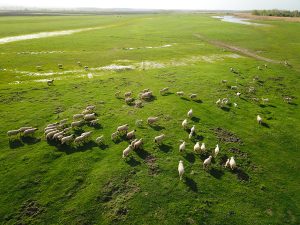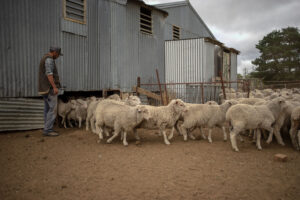With the weather patterns switching out of a La Niña year and plenty of mention of El Niño in articles it is time to look again at the relationship between La Niña, El Niño, and rainfall (the key driver of agricultural production). The prospect of an El Niño is not very palatable; however, the seasonal outcome of El Niño years varies.
The definition of an El Niño year varies, with the Bureau of Meteorology (BOM) using a range of criteria, (read here). The Long Paddock website provides a narrower definition based on the Southern Oscillation Index (SOI) (read here). For this article, Mecardo uses the June to October SOI average as a scale and BOM defined El Niño and La Niña years.
We are interested in the relationship between rainfall and meteorological indicators such as the SOI as rainfall drives agricultural production. For sheep, Mecardo looked at the link between rainfall and sheep offtake in April (read here) and merino fibre diameter and seasonal conditions last October (read here), as two good examples.
In Figure 1, annual averages for the SOI between June and October are compared to a weighted average (for wool production) of rainfall rank across wool production regions for the April to November period of comparable years, from 1979 to 2022. The rainfall percentile ranks are developed using a rolling 40-year rainfall history. The SOI runs along the horizontal axis with rainfall rank on the vertical axis. While there is a reasonable correlation, there is plenty of room for a low SOI year to have near-median rainfall. As a rule, years with a weighted average rainfall rank in the lower two deciles is a tough drought, although we need to keep in mind regional variations of which the most obvious is the difference between eastern and Western Australia. The loose correlation also means a positive SOI year can have a less-than-median rainfall year.
Figure 2 takes the Figure 1 data points and highlights the years which were declared El Niño (El) and La Niña (LA). El Niño years are all on the side of a negative SOI and La Niña years are on the side of appositive SOI. No great surprises there. However, from an industry perspective, an El Niño year can vary from a raging drought (1982, 1994, 2002) to a variable year (1987, 1993, 2009) depending on location. The declaration of an El Niño year tells us that rainfall will be skewed to decile five and lower, which is quite a wide range.
While rainfall information is useful as a guide to agricultural production (the sheep offtake has a good correlation to rainfall rank), often it is the change in rainfall that is more useful such as a change in the merino fibre diameter. Figure 3 shows the year-on-year change in the data used in Figure 1. It compares the change in rainfall to the change in SOI. This adjustment of the data tightens up the correlation between the SOI and rainfall rank markedly.
What does it mean?
As a rainfall forecast tool, the El Niño -Southern Oscillation (ENSO) system is a broad brush at best. From a wool and sheep industry perspective, it can help point to whether rainfall overall will be in the top or bottom half of rainfall distributions, within which there is a wide range of possible seasonal scenarios albeit skewed to the wet or dry side.
Have any questions or comments?
Key Points
- An El Niño year points to rainfall for sheep/wool regions overall being in the bottom half of rankings.
- However there is a world of difference between a rainfall ranking near median levels and a ranking in the bottom two deciles.
- A La Niña year will see rainfall ranking in the upper half (median and higher).
Click on figure to expand
Click on figure to expand
Click on figure to expand
Data sources: BOM, Long Paddock, AWEX, ICS, Mecardo















